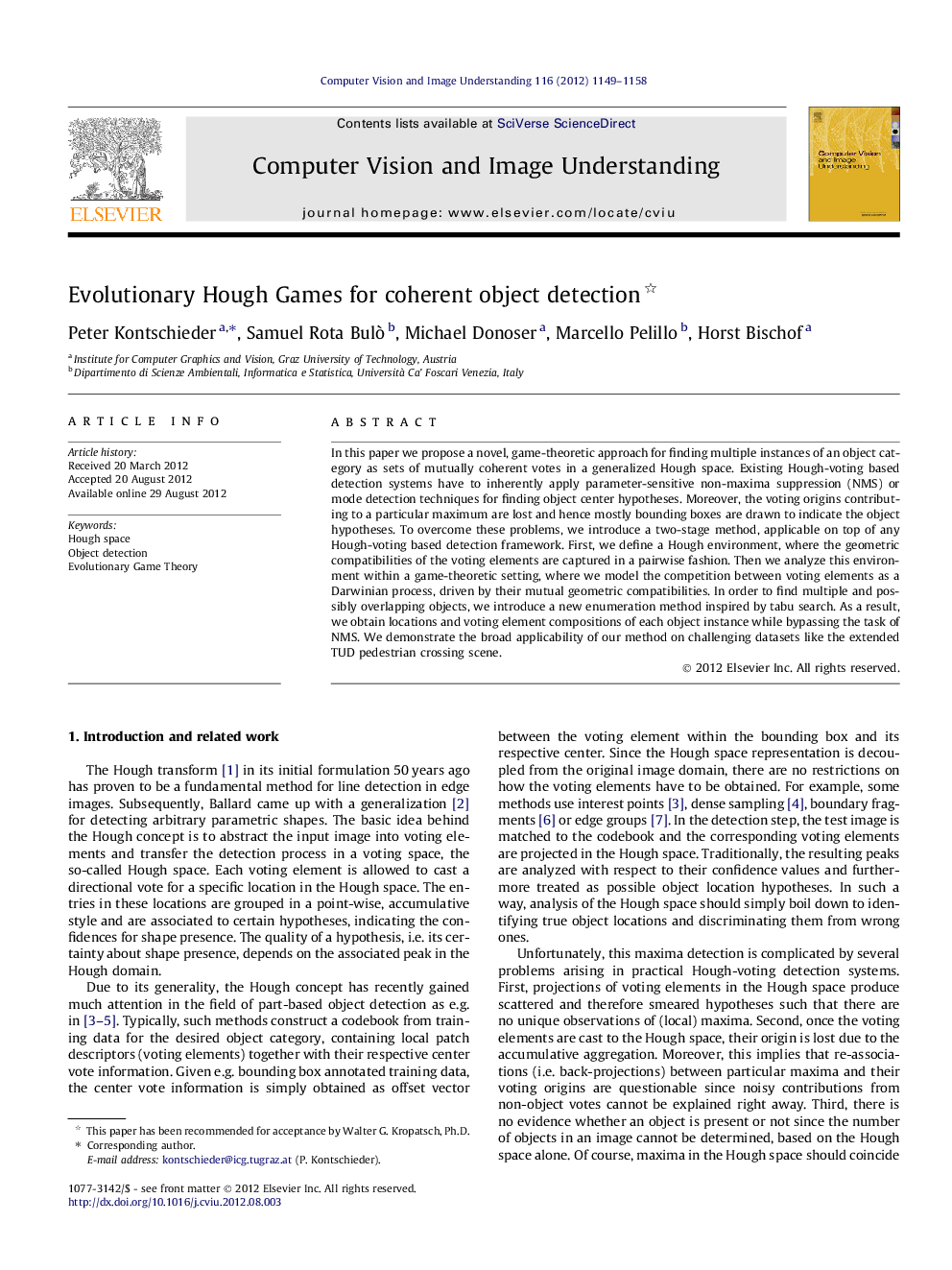| Article ID | Journal | Published Year | Pages | File Type |
|---|---|---|---|---|
| 525888 | Computer Vision and Image Understanding | 2012 | 10 Pages |
In this paper we propose a novel, game-theoretic approach for finding multiple instances of an object category as sets of mutually coherent votes in a generalized Hough space. Existing Hough-voting based detection systems have to inherently apply parameter-sensitive non-maxima suppression (NMS) or mode detection techniques for finding object center hypotheses. Moreover, the voting origins contributing to a particular maximum are lost and hence mostly bounding boxes are drawn to indicate the object hypotheses. To overcome these problems, we introduce a two-stage method, applicable on top of any Hough-voting based detection framework. First, we define a Hough environment, where the geometric compatibilities of the voting elements are captured in a pairwise fashion. Then we analyze this environment within a game-theoretic setting, where we model the competition between voting elements as a Darwinian process, driven by their mutual geometric compatibilities. In order to find multiple and possibly overlapping objects, we introduce a new enumeration method inspired by tabu search. As a result, we obtain locations and voting element compositions of each object instance while bypassing the task of NMS. We demonstrate the broad applicability of our method on challenging datasets like the extended TUD pedestrian crossing scene.
► We propose a method for detecting multiple instances of an object in an image. ► Objects are sought as sets of mutually coherent votes in a generalized Hough space. ► The voting process in Hough space is replaced by a non-cooperative “Hough” game. ► Object detection is achieved by finding the equilibria of the Hough game. ► Multiple equilibria/objects are found by means of a novel enumeration algorithm.
